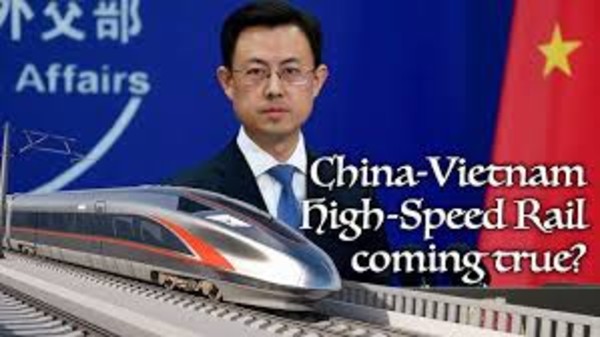
Vietnam Parliament approves $8 billion rail link to China
HANOI : The Vietnamese Parliament on Wednesday approved a railway project worth over $8 billion that will connect its northern port city to the Chinese border. The project, which will connect the two countries, received overwhelming support from lawmakers, with 455 out of 459 voting in favor, according to Vietnam News.
The main route will be 391 kilometers (242 miles) long, with 28 kilometers (17 miles) of branch lines connecting Haiphong, the port city, to Lao Cai, a mountainous city bordering China’s Yunnan province.
The project will cover nine localities, with the total cost estimated to be approximately $8.36 billion. The feasibility study will begin this year, and Vietnam aims to complete the project by 2030.
The 391-kilometer railway will run from the Vietnam-China border gate at Lao Cai-Hekou to the Vietnamese capital Hanoi. From there it will head east to Haiphong, which houses the largest seaport in northern Vietnam. According to state media reports, the project will also include 27.9 kilometers of branch lines.
“Vietnam’s current railway system is outdated, and the country needs a new system to support its economic development,” Transport Minister Nguyen Hong Minh told parliament last week. He said construction on the railway project, which will run at a top speed of 160 kilometers per hour, will begin this year and is expected to be completed by 2030.
The railway will upgrade the existing narrow-gauge (1,000 mm) rail line that links Lao Cai with Haiphong, which was completed at great expense by the French colonial government in 1910. The new electrified railway will use standard (1,435 mm) gauge, which is also the standard used for most of China’s rail network.
According to an earlier report from Vietnamese state media, the railway will be financed in part through a loan provided by the Export-Import Bank of China (China Eximbank). However, the exact size of the Chinese loan has not been disclosed in reports of the National Assembly vote, and many even omit mention of the Chinese funding connection at all. VnExpress reported simply that “funds for the project will come from the state budget and other legal sources.”
The effect of the project, particularly the harmonization of the railway gauge with the Chinese rail network, will be to deepen the integration between northern Vietnam, which is home to a booming manufacturing base as well as substantial deposits of rare earth metals, with southern China. In its coverage of the issue, the Chinese state media tabloid Global Times described the railway project as a further step toward the creation of a Pan-Asian Railway, following the completion of the Laos-China high-speed railway in 2021 and the planned extension of this into Thailand.
The Global Times quoted one Chinese academic as saying that the creation of a Pan-Asia Railway “will further enhance connectivity between China and Southeast Asia, promoting deeper integration of industrial and supply chains.”
The approval of the railway is intended to support the vaunting ambitions of Communist Party chief To Lam, who since taking office last year has pledged to catapult Vietnam into a new “era of national rise.” Last week, Vietnam officially revised upward its economic growth target for 2025 to at least 8 percent, up from 6.5 – 7.0 percent.
It is fast becoming clear that a cornerstone of this project of national rejuvenation is large-scale upgrades to Vietnam’s infrastructure. In December, the National Assembly also approved the construction of a high-speed railway connecting the north and south of the country, a project that is estimated to cost $67 billion. The Communist Party of Vietnam has also taken the step of reactivating the country’s nuclear power plans. Also on Wednesday, the National Assembly adopted policies to develop nuclear power plants in Vietnam, “the first of which is expected to be completed in 2031,”
Source : Reuters
